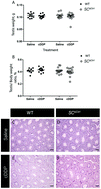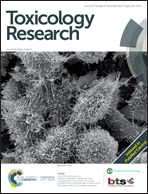Mice with a Sertoli cell-specific knockout of the Ctr1 gene exhibit a reduced sensitivity to cisplatin-induced testicular germ cell apoptosis
Abstract
Exposure to the chemotherapeutic agent cis-diamminedichloroplatinum(II) (cDDP) is well known to instigate acute and prolonged testicular injury in male patients. Many investigators have hypothesized that cDDP-induced dysfunction of Sertoli cells (SCs) may, in part, account for the cDDP-induced lasting testicular injury. Nevertheless, the relative contribution of cDDP-induced SC injury versus direct effects on germ cells (GCs) to the pathogenesis of GC loss remains to be elucidated. The expression of the copper transporter 1 (CTR1) protein in cells directly corresponds with cDDP uptake and its cellular toxicity. Therefore, to discern the role of SCs in the pathogenic mechanism, mice were developed with a SC-specific disruption of the Ctr1 gene (SCΔCtr1) as a strategy to prevent their exposure to cDDP. Adult mice at postnatal day (PND) 60 were treated with 5 mg kg−1 cDDP and then testis collected at 48 hours. A two-fold increase in GC-apoptosis occurred in the testis of cDDP-treated wildtype (WT) mice as compared to saline-treated WT mice. In contrast, cDDP-treated SCΔCtr1 mice exhibited only a half-fold increase in GC-apoptosis as compared to the saline-treated SCΔCtr1 mice. This reduced incidence of GC apoptosis in the SCΔCtr1 mice corresponded to a significantly lower level of platinum within the testis. Taken together, these findings reveal that the uptake of cDDP by CTR1 in SCs accounts for the accumulation of cDDP in the testis and plays a pivotal role in the pathogenic sequence of events leading to the loss of germ cells via apoptosis.



 Please wait while we load your content...
Please wait while we load your content...